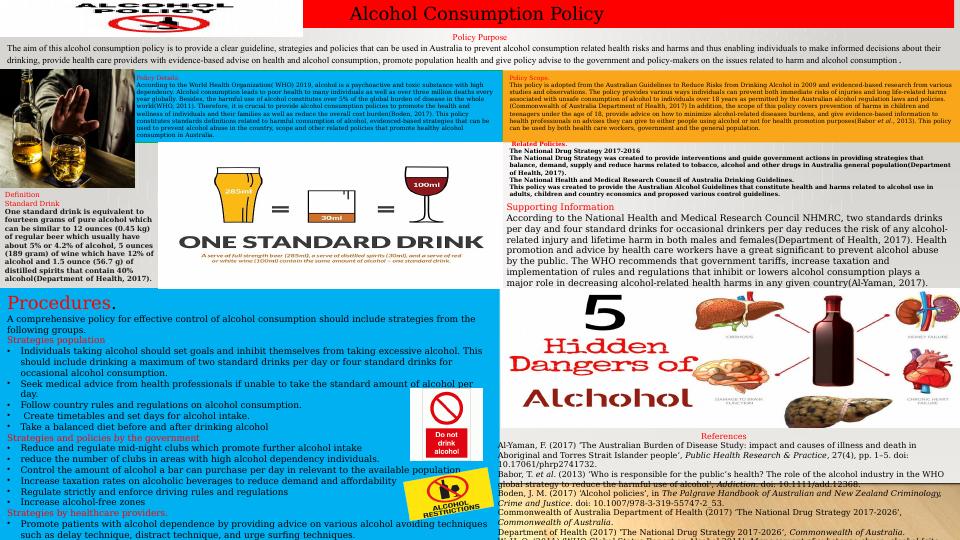Alcohol Consumption Policy
Instructions on how to use a template for creating a population graphic title infographic.
1 Pages1050 Words31 Views
Added on 2022-12-27
About This Document
This alcohol consumption policy provides guidelines, strategies, and policies to prevent alcohol-related health risks and harms in Australia. It aims to promote informed decision-making, provide evidence-based advice to healthcare providers, and give policy advice to the government and policy-makers.
Alcohol Consumption Policy
Instructions on how to use a template for creating a population graphic title infographic.
Added on 2022-12-27
ShareRelated Documents
End of preview
Want to access all the pages? Upload your documents or become a member.
Alcohol Consumption Policy in Australia
|1
|1119
|67
Health Promotion Strategy
|8
|1632
|38
Health Policy Analysis and Critique: National Alcohol Policy for the Elderly
|17
|4606
|50
Alcohol Consumption among Aboriginals and Torres Strait Islanders
|1
|1792
|281
Harm Minimization: Substance Abuse in Australia
|12
|2943
|244
Sample Assignment on Nursing (pdf)
|14
|2769
|27

